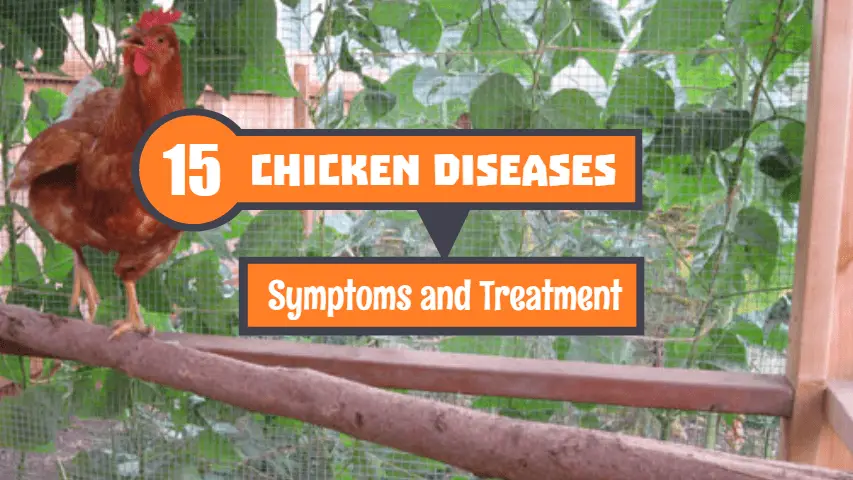Nothing beats wandering down to the bottom of the garden to collect your freshly laid eggs for breakfast. But one thing that might put a dampener on that experience is to find out your beloved chickens are carrying diseases.
Diseases can spread quickly among chickens and can be fatal, so by learning about the most common chicken diseases, and their symptoms. And also, how to treat them could save your chicken’s life and you a lot of time, money and stress.
Related Article – 69 DIY Chicken Coop Plans and Ideas – Easy to Build (100% Free)
Chicken Diseases, Symptoms And Treatment
Below are some of the most common and dangerous diseases found amongst chickens today.
#1. Fowl Pox
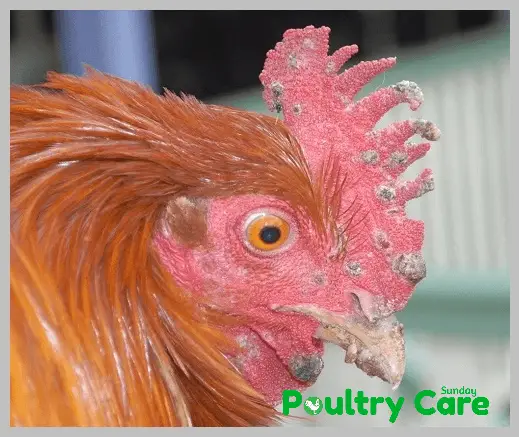
One disease increasing in prevalence is Fowl Pox. Fortunately, it’s relatively easy to spot. Can you see white patches on the skin?
Can you see ulcers in their mouth? Both of these could be indicators that your chicken is infected. The good news though, is that treatment is readily available.
Fowl Pox attacks the immune method, so giving your chicken somewhere warm, safe and dry will allow them to recover quickly.
It is also worth feeding your chicken soft food, plus many vets offer topical solutions to apply to the problem area.
Related Article – List of 80 Chicken Breeds – Information and Pictures
#2. Fowl Cholera
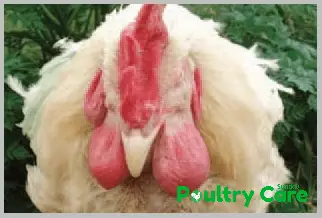
Forget chicken pox diseases, this bacterial disease attacks chickens just as brutally. It usually infects chickens over 5 months old.
It can be caught from a range of rodents and animals, including birds and raccoons. Are your chickens suffering from yellow diarrhoea? Do they have a darkened head or appear to have difficulty moving?
These could all be signs that your chicken has contracted the fowl cholera disease. The bad news is; that there are no available treatments for fowl cholera. Nearly all chickens that are infected with the disease die swiftly.
Having said that, all is not lost as you can get your chickens effectively vaccinated against this disease.
#3. Infectious Bronchitis
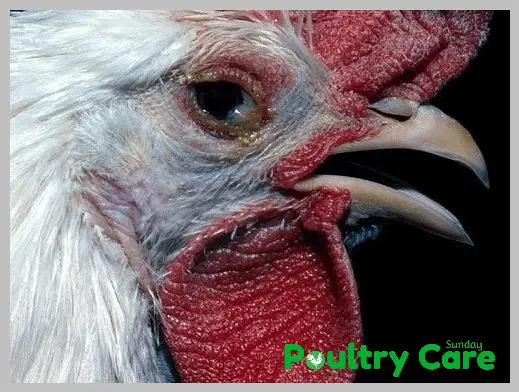
Another particularly nasty one of the common chicken disease is Infectious Bronchitis. This highly contagious disease is airborne, meaning your chickens can catch it extremely easily.
All they have to do is come in close proximity to an infected animal and they could become infected.
Are your chickens consistently coughing? Can you see discharge coming from the eyes, mouth, and nose? Hens will also stop laying eggs when contaminated. All of these could be clear signs that your chicken is infected.
Unfortunately, there exist no treatment options available to combat this disease. This means that half of all chicks that contract the infection will die.
What you can do as an owner, is give them a dry, warm place to rest and feed them soft food.
Related Article – 10 DIY Chicken Feeder And Waterer Plans And Ideas
#4. Botulism
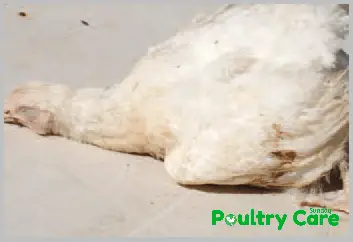
Botulism is another potentially lethal disease. Can you see tremors in your chicken? If so, these tremors could extend to take hold of the rest of your chicken’s body and eventually kill them.
Another symptom to keep an eye out for is if feathers fall out too easily. Fortunately, there are treatment options worth looking into. If the disease is still in its infancy, you can feed your chicken Epsom salts with warm water.
There is also an antitoxin that can be purchased from your local vet which can be effective to some extent.
#5. Infectious Coryza
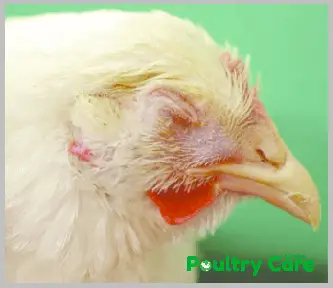
This is a particularly nasty disease and there are currently no treatment options to help you combat the effects.
If your chicken does get this disease they could carry the disease for the remainder of their life, where they could infect and kill other chickens.
This disease is also easily transmitted via infected water or contaminated objects, so it is essential to keep their living area clean and disinfected.
But what symptoms should you look out for?
Infected chickens will often develop very swollen heads, plus their eyes may become so swollen they appear closed, plus discharge may be visible from their eyes, nose or mouth.
#6. Thrush
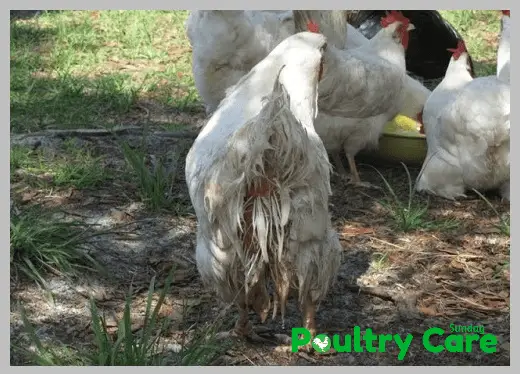
You may not think of Thrush as one of the chicken skin diseases.
But this fungal infection can be picked up from moldy food and can also be picked up from contaminated water.
Keep an eye out for discharge from their crop and pay attention to see iftheir appetite has suddenly increased. In addition, their feathers may look untidy and messy.
To treat Thrush, your chickens will require simple anti-fungal medication that can be collected from the vets. But also be sure to remove any possibly contaminated water.
#7. Newcastle Disease

This disease although it doesn’t usually kill chickens, can do some serious harm to your chicken’s respiratory process. The first signs to look out for are discharged from the mouth, nose, and eyes. You may also notice significant breathing difficulty and those hens will stop lying.
The disease is transmitted via contact with other infected animals, usually birds, but it could also be carried by other animals. Thankfully, treatment usually entails a vaccine, but if the bird hasn’t been vaccinated they will usually survive, especially if they are older.
Unfortunately, chicks do frequently die from this disease as their immune processes are unable to fight off the infection.
#8. Pullorum

This viral disease attacks different birds differently. In older birds, you may say them coughing and struggling to lay eggs.
However, in chicks you frequently don’t see any symptoms, meaning some die completely unexpectedly.
But when they do display symptoms, it is usually a compromised respiratory way or white paste across their back. Today there exist no treatment options for Pullorum.
Whilst there have been rumblings about a vaccine, as it currently stands chickens will need to be killed if they display symptoms to prevent others from catching the disease.
#9. Avian Influenza

This is an infection many people are particularly concerned about, through a fear they themselves may be able to contract it.
The symptoms are relatively easy to spot. They will stop laying eggs, diarrhoea will probably litter your garden and their face may become inflamed. There have also been reports of red patches on the legs and combs of infected chickens.
Unfortunately, there is still no effective means of treating infected chickens. Instead, once the bird gets the disease it must be killed and removed from the area of other chickens safely.
Due to the contagious nature of the disease, swift action on the part of the owner must be taken.
#10. Bumblefoot
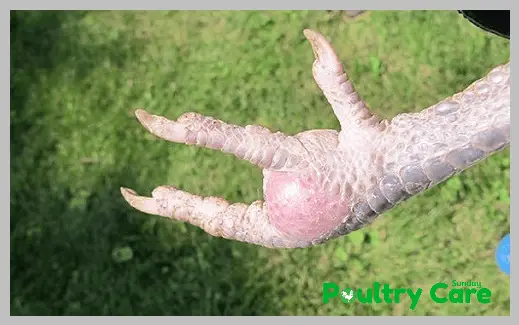
Despite the almost humorous name, this disease is no laughing matter. It is very easy for your chicken to pick up this ailment.
They can get it just from messing around in the garden. But once their foot gets cut on, it is open to infection, which can then turn into bumblefoot. Keep an eye out for these chicken disease symptoms: Swelling, sore and inflamed patches on the legs and feet.
On the positive side, it is a relatively easy illness to spot. Treating bumblefoot usually requires surgery to remove the infection and problem area.
Unfortunately, this can be a costly endeavor and your chicken will need some time to heal.
#11. Mushy chick
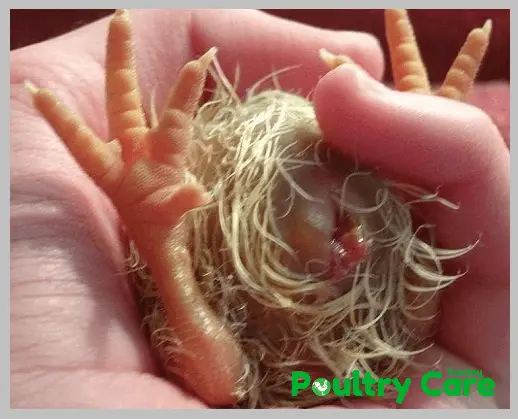
Another particularly nasty one of the common chicken disease, with a slightly questionable name, is the mushy chick. As you can probably guess, this disease tends to plague young chicks.
The symptoms to look out for are an irritated, slightly blue midsection when the chicks hatch. They are also usually rather weak.
The disease is transmitted via direct contact with a contaminated animal or object and because the chick has an undeveloped immune process, it cannot fight off the infection.
The treatment options for mushy chick remain limited. Your best course of action is antibiotics. These do not always work, but sometimes a swift course will do the job.
#12. Mycoplasmosis
Despite sounding like a spaceship, this is not the disease you want your chicken to come down with.
It is contracted via direct contact with other birds and is relatively contagious.
The symptoms to look out for, include problems with breathing, persistent coughing and visible difficulty in moving as a result of swollen joints.
It has also been reported that hens will stop laying eggs when infected.
The treatment options are limited, so unfortunately many chickens do die from this disease.
But all is not lost, as in some cases antibiotics will tackle the infection head-on and your chicken will survive.
#13. Marek’s Disease
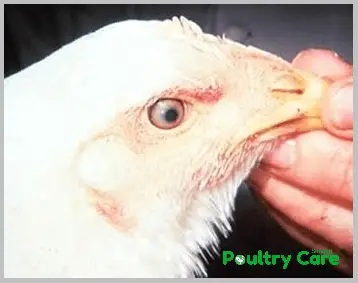
Another particularly nasty one of the common chicken disease, is extremely contagious and can be caught by inhaling dead skin cells or dust from the feathers of other birds.
This is a particularly nasty viral disease that barely leaves any survivors and those that do survive will carry the disease for life. It usually affects chicks, so keep an eye out for tumors and the loss of movement from any limbs.
Also, watch out for the skin going gray and your chicken not showing any response to light. There are no effective treatment options; instead, a vaccine can be given to chicks when they first hatch.
#14. Coccidiosis
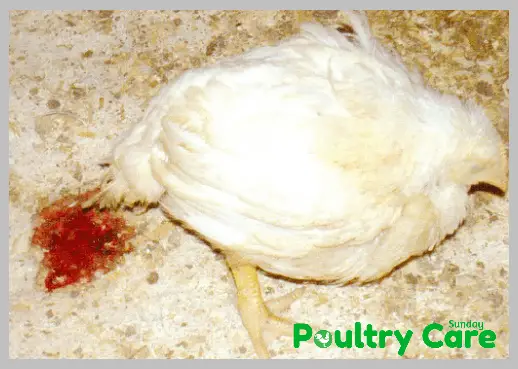
This unpleasant disease is caused by a microscopic parasitic organism that attaches to the walls of your chicken’s intestines and wreaks havoc. Not only will it call significant pain, but it can also kill your chickens.
Common symptoms include diarrhoea with blood in, significant weight loss and a reduction in the number of eggs being hatched. Fortunately, you can get a vaccine to prevent the infection from taking hold, but if the chicken already has the infection.
Then you may want to get your hands on anticoccidial medication from your vet. This may quickly and effectively kill the bacteria in your chicken’s gut.
#15. Infectious Laryngo Tracheitis
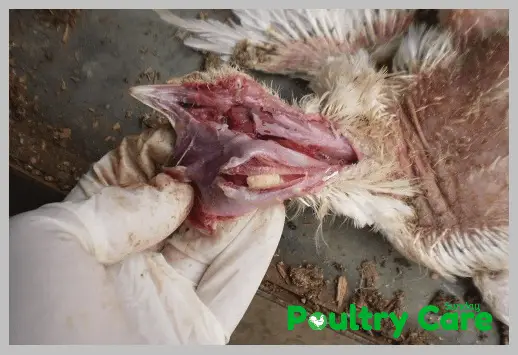
Fortunately, this disease is rarely fatal; however, sometimes it can take the lives of chickens. If your chicken seems short of breath, weak, or coughing persistently and coughing with blood or mucus in it, then your chicken may well be infected.
The virus is contagious and usually infects the host for around 6 weeks and if it doesn’t kill the chicken it is defeated. There exist a limited number of treatment options.
All you can really do is give your chicken antibiotics to fight off any secondary infections and try to give them a warm and dry place to stay whilst they recover.
DON’T MISS
Last Updated on January 14, 2025 by Pauline G. Carter

